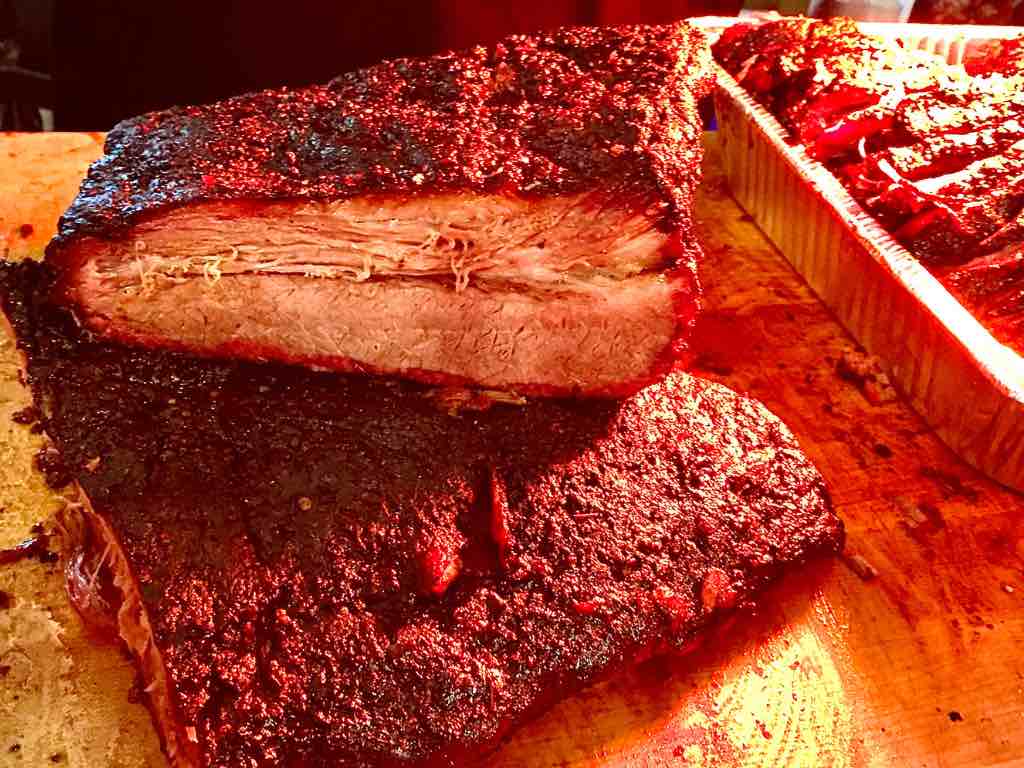
Understanding the Perfect Brisket Done Temperature
|
|
Time to read 6 min
Welcome to One Stop Halal!
Written by: Samir P.
|
|
Time to read 6 min
Brisket, often hailed as the crown jewel of barbecue, is a labor of love for pitmasters and home cooks alike. Achieving the perfect brisket done temperature is the key to unlocking its legendary tenderness and flavor. In this comprehensive guide, we'll delve into the science, techniques, and tips behind reaching brisket nirvana. So, grab your meat thermometer, fire up the smoker, and let's embark on a journey to brisket perfection.
Temperature is the linchpin of brisket perfection. Understanding why temperature matters is crucial for anyone seeking to master the art of this delectable dish. Brisket, known for its tough muscle fibers and collagen-rich connective tissue, demands patience and precision.
The magic of brisket transformation unfolds as it slowly cooks, breaking down the collagen into gelatin, resulting in that sought-after tenderness. Achieving the ideal internal brisket done temp is the key to this alchemical process.
Typically, a brisket is cooked low and slow, often at temperatures between 225°F and 250°F (107°C to 121°C). This allows the meat to spend hours in the heat, allowing the fibers to relax and the fats to render. The internal temperature should gradually rise, and brisket perfection occurs when it reaches about 195°F to 205°F (90°C to 96°C).
However, the magic doesn't stop there. After reaching this temperature, the brisket requires a resting period, allowing the juices to redistribute throughout the meat. This ensures every bite is moist and bursting with flavor.
In summary, temperature matters because it's the key to converting a tough cut into a tender, flavorful delicacy. Mastering the balance between time, temperature, and patience is the secret to achieving brisket nirvana.
The ideal done temperatures for brisket are the holy grail for pitmasters and BBQ enthusiasts alike. Achieving that perfect level of doneness is what sets apart a sublime brisket from a mediocre one. While personal preferences can vary, there are generally accepted temperature ranges that signify when brisket is at its best.
Remember, achieving the ideal done temperature isn't the only factor at play. Resting the brisket after cooking is equally important. During this rest period, the juices redistribute throughout the meat, ensuring a moist and flavorful final product.
Ultimately, the ideal done temperature can vary depending on your personal taste and the specific cut of brisket you're working with. It's recommended to experiment, take notes, and refine your approach to find the perfect doneness for your palate.
Cooking brisket to perfection involves not only reaching the ideal internal temperature but also employing the right cooking method. The choice of cooking method can significantly impact the final texture and flavor of the brisket. Here's a closer look at the cooking methods and their associated temperatures:
Choosing the right cooking method and temperature largely depends on your preferences, equipment, and available time. It's essential to monitor the internal temperature of the brisket using a meat thermometer and to allow for a resting period after cooking to ensure that the juices redistribute evenly, resulting in a mouthwatering, tender brisket, regardless of the method used.
Achieving brisket perfection isn't just about the right temperature and cooking method; it also requires finesse and attention to detail. Here are some pitmaster tips for success:
Remember that barbecue is as much an art as it is a science. Each pitmaster develops a unique approach and flavor profile over time. Don't be afraid to adapt and refine your methods as you continue your journey toward brisket perfection.
Welcome to your favorite butcher shop. We carry custom cuts of beef, chicken, lamb, goat, grass-fed beef, wagyu, deli, and more. We ship across the United States in 1-2 business days.
Achieving the perfect done temperature for brisket is a journey that combines science, art, and patience. Whether you're a seasoned pitmaster or a novice cook, understanding the significance of temperature and applying the right techniques will elevate your brisket game. So, fire up your smoker or preheat that oven, and let the aromatic journey to brisket perfection begin. Your taste buds will thank you.

© 2026 One Stop Halal, Inc.